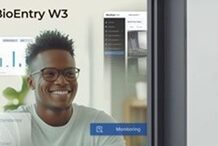Almost every retail location uses a video surveillance security system to combat shoplifting, to encourage employee honesty, and to provide video evidence in case of a health and safety claim or other incident. The value of video in the retail environment has been clearly demonstrated over the years in relation to these purposes, but video surveillance has many other capabilities. It can provide high value to retailers who look beyond these core applications to embrace the expanding capabilities and surprising cost-effectiveness of IP-based networked video.
Video systems can provide a new and effective management tool in any retail environment. Exploring the management benefits, in addition to the traditional focus on security or loss prevention, is key to leveraging the complete value of video in retail operations. Video can help with managing remote sites, monitoring point-of-purchase (POP) and merchandising displays, ensuring efficient customer service and a range of other uses. Real-time video of a remote retail location can benefit personnel management, asset tracking and overall efficiencies. This untapped potential also relates to another challenge, which is the need to show a return on investment (ROI) for any technology purchase.
The value proposition for video as a security and surveillance tool may be well understood, but the current economic climate makes it imperative that the broader bottom-line benefits and added efficiencies are seen clearly and easily quantified. This is especially important in the retail environment, where narrow margins and downward cost pressures make it important to show a technology ROI. The added value of uncovering additional benefits and uses of video makes the ROI case that much stronger.
Video surveillance software now allows retailers to monitor a location from anywhere –remotely from home or from a mobile device. Retailers can use this capability for a variety of business intelligence functions, including quality control, customer service and merchandising. Video can help determine the most effective scheduling of personnel or the most effective POP display by viewing when the busiest times are in stores or at a particular counter or display. Video can also streamline processes to provide alerts if equipment malfunctions, and generally to ensure overall smooth operation.
New video management tools such as rules-based identification of alerts, video analytics and event-driven push video make it possible for fewer operators to manage more surveillance cameras. Increased efficiency is a benefit of not having to review hours of video.
The value of the data is unprecedented. By analysing video, retailers can determine customer spending habits, which displays are the busiest, and the best use of personnel. In summary, the video analysis provides data that can direct retailers to the best use of people and resources.
Video can be valuable to almost every department in a retail operation. For example, human resources can use video to address employee-related issues such as sexual harassment claims or time-and-attendance. Marketing can use a system to confirm whether merchandising displays have been set up according to a schematic. Management can use it as a virtual “store walk-through” to observe employee productivity and address other issues.
The data obtained from video surveillance provides valuable information for today’s retailers. It can be used to enhance the productivity of employees and processes, count customers using analytics algorithms, monitor crowd control and integrate with other department operations such as maintenance and facilities. Lastly, video integrated with third-party offerings such as HVAC can save costs, for example, by adjusting the heating/air conditioning according to how many people are in a room.
Retailers should recognise the wealth of benefits video surveillance can provide, beyond security and loss prevention. Video surveillance can act as a broad-based management and business intelligence tool when utilised correctly.











